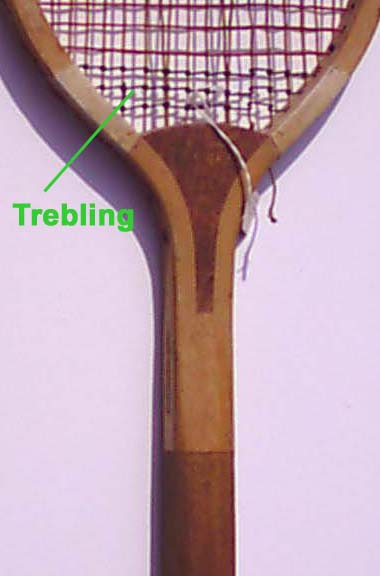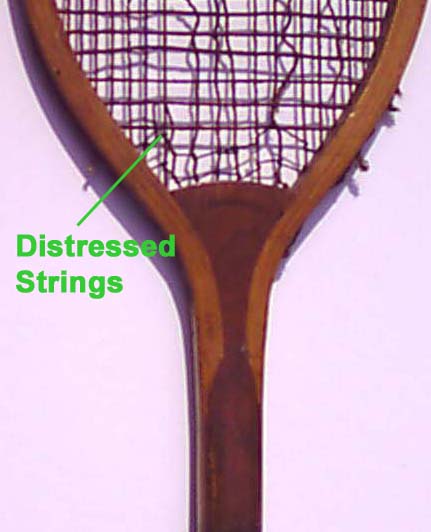

|
Where would rackets and our game be today without stringing and stringing machines? The origins of the game
going back over 800 years were to hit the ball with the flat of the hand which progressed to wearing a glove,
then a glove with leather thongs and onto solid hand held battoirs and finally in the mid 1550s to a string
frame.
Originally strings were made of natural gut from 6-8 sheep or cattle to make a single set through to experiments with steel wire silks onto today's modern strings of synthetic and composites of nylon, Kevlar, advanced polyesters, etc. It is fascinating to look at the many variations and innovations in thickness, trebling and patterns over the years which are best illustrated in original rackets. Trebling was originally in a thinner guage gut but was replaced by coloured strings, twines, silks and later nylons. The purpose was to prevent string movement by having 3 or more rows of strings (hence trebling) at the top of the string pattern and at the throat end wound around the mains. This produced a rough and smooth side to the stringing of the trebling. Hence rough or smooth, your serve or mine! It is so important no matter how distressed to keep original strings in original rackets to preserve the history. This section includes strings and things associated with racket stringing. |